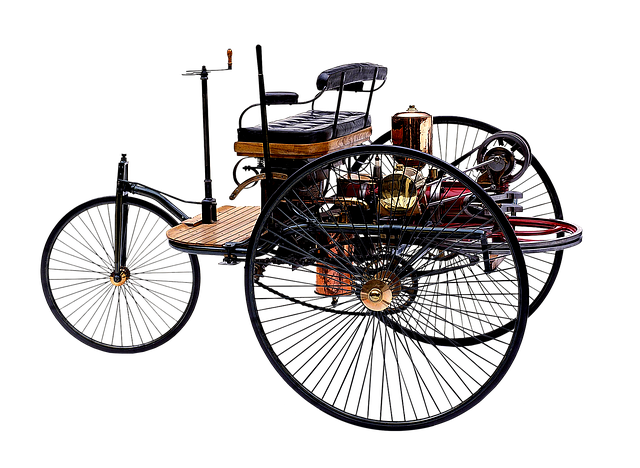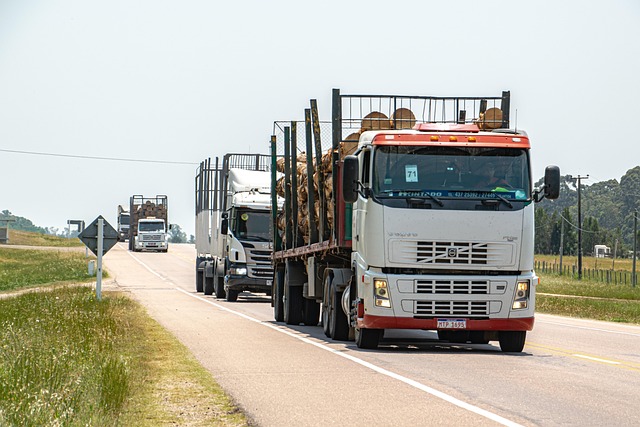Looking to register your car in California? This comprehensive guide walks you through every step, from understanding eligibility requirements to completing the DMV VIN verification process. We’ll also detail how to apply online or in-person and pay registration fees. By following these clear instructions, you’ll be on your way to securing your vehicle’s license plate smoothly and efficiently, ensuring compliance with California’s regulations. Remember, a correctly registered car means safer roads for all.
- Understand Eligibility Requirements for Car Registration in California
- Gather Necessary Documents for Car Registration
- Perform DMV VIN Verification Step-by-Step
- Complete Online or In-Person Car Registration Application
- Pay Car Registration Fees and Obtain Your Vehicle's License Plate
Understand Eligibility Requirements for Car Registration in California

Before diving into the registration process, it’s crucial to understand who is eligible for car registration in California. The California Department of Motor Vehicles (DMV) has specific requirements that all owners must meet. Firstly, your vehicle must be properly insured and have a valid registration from another state or country. Additionally, you’ll need to pass a safety inspection, often referred to as a smog test, to ensure it complies with the state’s emission standards. The Vehicle Identification Number (VIN) verification is a critical step in this process, which can be efficiently completed through a mobile VIN verification service or at a designated DMV location.
Another essential aspect is ensuring your car’s title is clear and you have all necessary documents, including proof of identity and residency. If you’re importing a vehicle, there might be additional requirements like customs clearance and documentation. It’s always advisable to check with the DMV for up-to-date information, especially regarding the ever-changing regulations related to mobile VIN inspection and other compliance checks.
Gather Necessary Documents for Car Registration

Before you begin the car registration process in California, it’s crucial to gather all the essential documents. This includes your vehicle’s registration certificate from the previous state, a valid driver’s license, proof of insurance, and the most important document for this step—the Vehicle Identification Number (VIN) verification. The DMV requires a VIN inspection to confirm the car’s identity and ensure it meets safety standards. You can opt for a mobile vin inspection or visit a designated location for this process.
Additionally, have your purchase agreement or sales receipt handy. These documents serve as proof of ownership, which is a fundamental requirement for registering any vehicle in California. By having these essential papers ready, you’ll streamline the registration procedure and avoid potential delays.
Perform DMV VIN Verification Step-by-Step

Performing a DMV VIN verification is a crucial step in registering your car in California. Here’s how to do it step-by-step:
1. Gather Required Documents: Before heading to the DMV, ensure you have all necessary documents, including the vehicle’s title, registration, and proof of insurance. Additionally, note down your Vehicle Identification Number (VIN) from the vehicle’s dashboard or driver-side door jamb.
2. Access the Online System: On the California DMV website, locate and access the online VIN verification tool designed to check a vehicle’s history. Enter your VIN into the designated field. The system will then cross-reference the information with their records, providing details about the car’s past, including ownership changes, accidents, and outstanding recalls.
3. Review Results: Carefully read through the reported history. If everything appears clean—no accidents or significant issues—you’re ready to proceed with registration. However, if discrepancies are noted, you may need to take further steps, such as obtaining a repair estimate or addressing any open recalls before proceeding. Alternatively, consider utilizing a mobile vin inspection service for convenience and speed, where a professional will perform the check on your behalf.
Complete Online or In-Person Car Registration Application

To register your car in California, you can choose between completing the process online or in person at a DMV office. The application process involves providing detailed information about your vehicle, including its make, model, year, and unique Vehicle Identification Number (VIN). A crucial step is conducting a DMV VIN verification to ensure the vehicle’s history aligns with what’s claimed. You can do this through a digital platform or by visiting a local California DMV branch.
For convenience, many opt for a mobile VIN verifier, allowing you to perform the inspection from anywhere, eliminating the need for an in-person visit. This modern approach streamlines the registration process, making it more accessible and efficient for California residents.
Pay Car Registration Fees and Obtain Your Vehicle's License Plate

After completing your vehicle’s registration application at the DMV or online, the next step is to pay the required fees. California has specific car registration costs that vary based on factors like the type and age of your vehicle. You can typically make this payment online, by mail, or in-person at a local DMV office. Once the payment is processed, you’ll receive official confirmation, which may include a receipt or an email notification.
Obtaining your vehicle’s license plate involves a separate process called DMV VIN verification. This step ensures that your car’s unique Vehicle Identification Number (VIN) is accurately associated with your registration and plates. You can facilitate this through a mobile VIN verifier or conduct a manual inspection by providing your VIN to the DMV. A mobile VIN inspection app can streamline this task, allowing you to verify your vehicle’s details remotely. Ensure your plate matches the information in the DMV system to avoid any issues during future interactions with California’s transportation authorities.
Registering a car in California is a straightforward process, provided you meet all eligibility requirements. By gathering the necessary documents, undergoing the DMV VIN verification step-by-step, and completing your application either online or in person, you can ensure your vehicle is legally registered and ready to hit the road. Remember to pay the required fees and obtain your license plate for a smooth driving experience.



